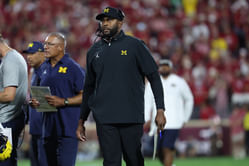
FBS in college football stands for Football Bowl Subdivision, representing the highest tier of collegiate football competition within the NCAA. Formerly recognized as Division I-A from 1978 to 2006, FBS emphasizes its prominent postseason bowls, hosting many prestigious bowl games annually, including the renowned College Football Playoff (CFP). Distinguished by its capacity to offer 85 full-ride scholarships, FBS institutions attract top-tier athletes, often securing commitments from coveted five-star and four-star recruits. Additionally, FBS schools are mandated to support a comprehensive sports program with at least 16 sponsored sports, reflecting the division's robust athletic offerings. As the pinnacle of college football, FBS embodies the pinnacle of competition and represents the epitome of collegiate football excellence in the United States. So this blog will discuss What Does FBS Stand for in College Football? And its other relatable aspects on college games as well.
FBS Stands for College Football
FBS, or Football Bowl Subdivision, designates the premier tier of college football in the United States, housing the largest and most competitive schools within the NCAA. Formerly recognized as Division I-A, FBS encompasses 10 conferences and 133 schools as of the 2023 season. Renowned for its widespread popularity and substantial revenue generation, FBS attracts significant spectatorship, with top teams drawing massive crowds to stadium games. Unlike other NCAA divisions, FBS lacks an officially sanctioned football national championship, historically relying on ranking systems by organizations such as the Associated Press and AFCA. Bowl games, both traditional exhibitions and Playoff components, serve as key postseason events within the FBS framework.
FBS’s History
College football's rich history spans over a century, marked by pivotal milestones transforming the sport and its governance. From the inaugural game in 1869 to Walter Camp's influential contributions to the game's structure, the sport evolved significantly by establishing key elements like the line of scrimmage and the system of downs. The introduction of the forward pass in the 1906 season, driven by the IAAUS's formation, marked a critical step toward ensuring player safety. Subsequent developments included the inception of renowned bowl games, the Heisman Trophy, and the platoon system. Notable shifts in NCAA regulations, such as the allowance for freshmen to compete in games and the divisional restructuring, further shaped the landscape of college football, culminating in establishing of the FBS and FCS subdivisions.
FBS and FCS
FBS refers to the Football Bowl Subdivision, representing the pinnacle of NCAA football, while FCS denotes the Football Championship Subdivision. Before 2006, these subdivisions were known as Division I-A and Division I-AA, respectively.
Awards and Honors in FBS Football
Individual Awards
Top Performer Accolades: Heisman Trophy, Maxwell Award, Walter Camp Award, Archie Griffin Award, AP Player of the Year, SN Player of the Year, Lombardi Award (expanded in 2016)
Defensive Excellence: Chuck Bednarik Award, Bronko Nagurski Trophy, Lott Trophy
Positional Excellence: Various position-specific awards like the Dave Rimington Trophy, Davey O'Brien Award, Manning Award, Dick Butkus Award, Doak Walker Award, Fred Biletnikoff Award, and more
Non-positional Recognitions: Awards for versatility, walk-on players, and top Canadian players
Coaching Recognition
Head Coaches: AFCA Coach of the Year, Eddie Robinson Coach of the Year, SN Coach of the Year, and more
Assistant Coaches: Broyles Award, AFCA Assistant Coach of the Year
Championship Trophies
College Football Playoff National Championship Trophy, AP National Championship Trophy, AFCA National Championship Trophy, Grantland Rice Trophy, MacArthur Bowl, and other prestigious awards acknowledging exceptional performance and coaching prowess in the FBS football landscape.
FAQs
A: FBS stands for Football Bowl Subdivision, representing the highest tier of collegiate football competition within the NCAA.
A: FBS is the top tier of college football, whereas FCS, or Football Championship Subdivision, represents a slightly lower level of competition.
A: Notable awards include the Heisman Trophy, Maxwell Award, Chuck Bednarik Award, and Davey O'Brien Award, among others.
A: Coaches are acknowledged through awards such as the AFCA Coach of the Year, Eddie Robinson Coach of the Year, and Broyles Award for assistant coaches.
A: Prominent championship trophies include the College Football Playoff National Championship Trophy, AP National Championship Trophy, and the MacArthur Bowl, among others.









